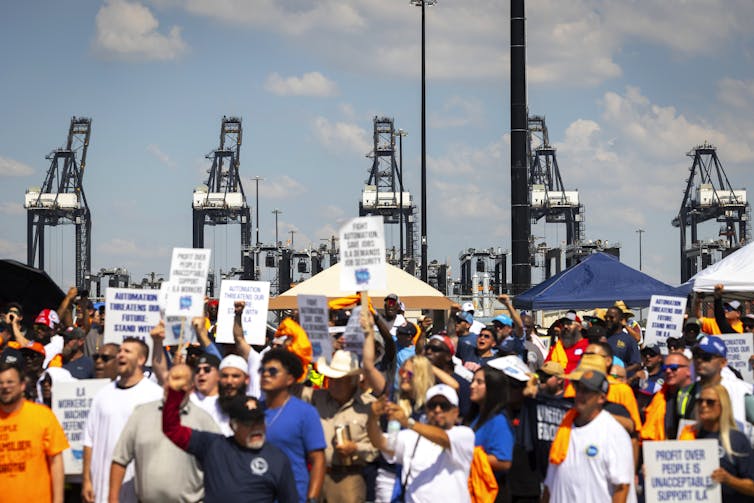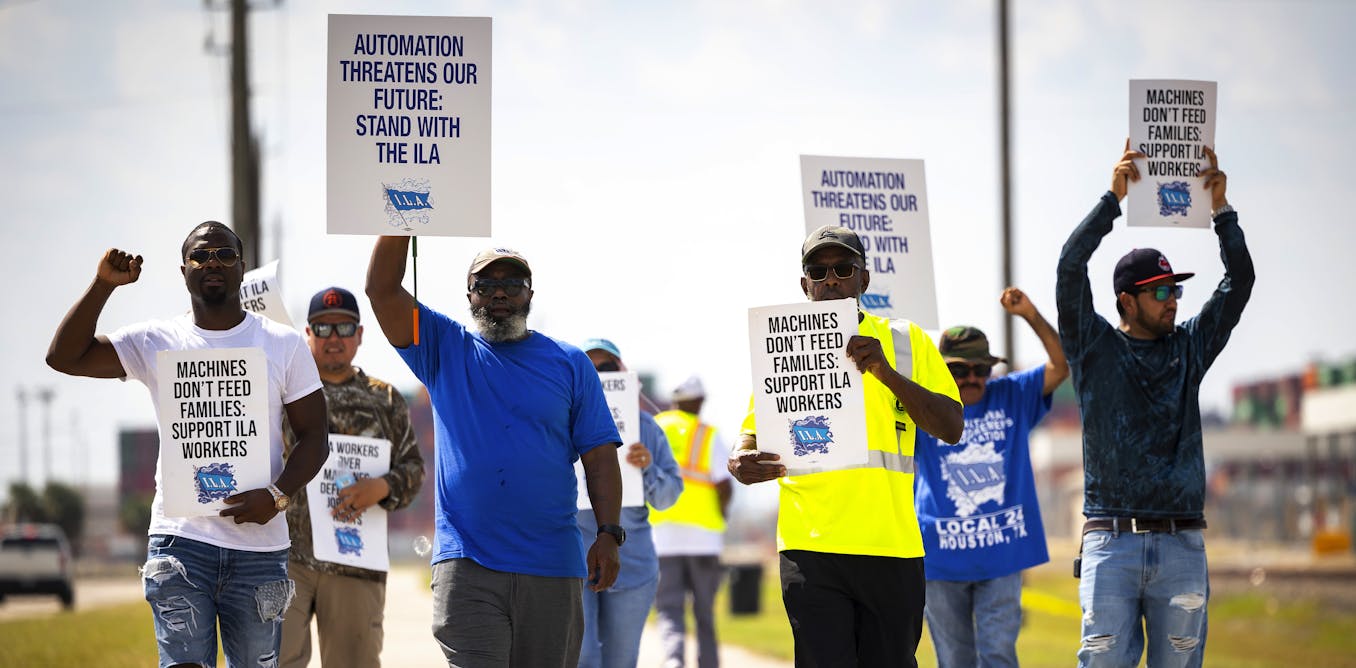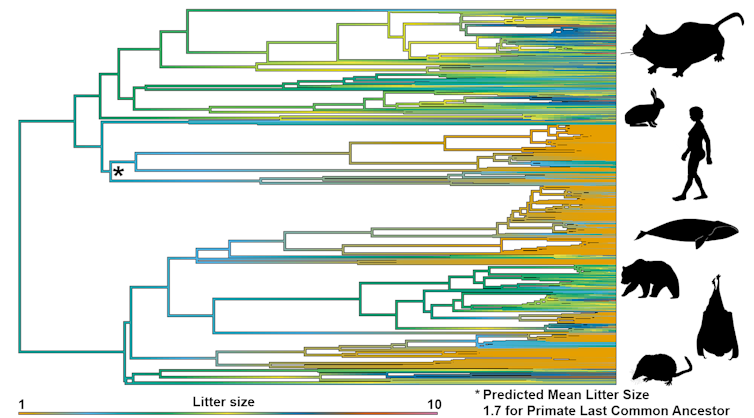Nearly 50,000 dockworkers from the International Longshoremen’s Association went on strike across the United States Eastern Seaboard in October. The strike, which lasted three days, ended on Oct. 3 after a tentative wage agreement was reached between the union and the United States Maritime Alliance.
Yet the agreement doesn’t resolve the union’s concerns over automation. For dockworkers, machines like automated stacking cranes pose a direct threat to job security. The union is still aiming to prohibit the operators of U.S. marine terminals from automating cargo handling.
However, this trend is not isolated to the shipping industry. In retail, frictionless stores are reducing the need for cashiers, while self-driving trucks are poised to replace drivers, at least on some routes.
The dockworker strike may have been resolved for now, but it was neither the first, nor will it be the last, showdown between labour and automation.
Indian communism
May 1 saw rallies take place all over the world, celebrating the labour movement and commemorating American workers who, in 1886, marched in Chicago for an eight-hour workday.
May Day holds particular significance in the southern Indian state of Kerala, a heartland of Indian communism. It had one of the earliest democratically elected communist governments in the world. In 1957, the Communist Party of India won the Assembly election in Kerala, setting a precedent for parliamentary communism in the country.
Read more:
May Day 2024: Workers on a warming planet deserve stronger labour protections
But, on May 1, 2018, the state government in Kerala led by the Communist Party of India (Marxist) abolished a practice that even it deemed far too proletarian — the nokku kooli.
Commonplace until recently, nokku kooli literally translates to “wages for looking on.” It was a practice where private individuals and businesses were forced to compensate worker unions for using industrial equipment towards productive ends, even if no labour was done.
For instance, a construction company moving material using cranes was still expected to pay wages at negotiated or union mandated rates to the workers who would have otherwise been needed to load and unload goods.
(AP Photo/R S Iyer)
Describing this extortionary practice, Keralan writer Paul Zacharia once wrote:
“The revolution in Kerala says the worker must be paid even if he doesn’t work. That is a kind of workers’ paradise even Marx did not anticipate.”
Widespread opposition to this practice eventually led to its 2018 abolition. In 2022, the High Court declared it “illegal and unconstitutional.”
A cautionary tale
The origins of nokku kooli stem from opposition to automation. As India’s economy liberalized and rapidly industrialized in the late 20th century, Kerala’s labour unions correctly identified mechanization as a threat to their jobs.
In response, powerful unions backed the nokku kooli system, with the government turning a blind eye. The system ensured workers would still receive a share of the economic pie, even as technology rendered their labour increasingly unnecessary.
Kerala’s nokku kooli practice, however, serves as a cautionary tale. What may have started as a natural immediate response of organized labour facing a rapid industrial transition eventually became increasingly extortionary, with predictable and damaging economic consequences.
In the decades that followed, the state’s reputation for militant trade unionism hindered its ability to attract private investment. Kerala experienced labour shortages in several sectors, while workers in automated roles, such as loading and unloading, continued to expect compensatory wages for little effort.
Same old fears
Today, fears of automation causing job losses are still prompting calls for policy fixes. Bill Gates and others have called for a “robot tax” — a tax on automation.
The revenue from such a tax would offset reduced income tax collections. Proponents argue it could be invested in worker retraining programs or for income replacement. These proposals mirror the spirit of nokku kooli: businesses should compensate workers, directly or indirectly, when machines replace their jobs.

(AP Photo/Annie Mulligan)
This speaks to a tension between short- and long-term approaches in addressing the impacts of technological disruption. Short-term fixes, like a robot tax, may mitigate immediate job losses and give workers a safety net.
However, some economists argue this is a misguided response to a “techno-panic” and risks stifling innovation, which could reduce productivity and hinder companies that rely on efficiency to stay viable in a global market.
Moreover, safety nets such as replacement incomes for displaced workers can also have unintended consequences in the long run, as seen in Kerala. While easing the transition, these measures risk creating a dependent workforce disincentivized to adapt to new economic realities.
Short-term fixes better than none
Still, perhaps short-term fixes — even ones that may eventually need undoing — are better than entirely ignoring the immediate and real impacts on workers, or offering glib solutions such as asking displaced industrial workers to learn to code.
Globalization’s benefits were unevenly distributed across the world, and widening inequality is argued to be a driver of sociopolitical polarization. As automation advances, the same risk looms large.
We still lack mechanisms to adequately redistribute economic gains due to technological innovation. Ignoring the disruptive impacts, however transitory, could still leave entire segments of the workforce behind, compounding inequality and social unrest.
In the end, the lesson from Kerala might not just be about avoiding excess. It is also a reminder that policies that no longer work can, and should, be undone. As we embrace technological progress, we must not risk losing sight of the real people whose livelihoods are at stake in the here and now.




